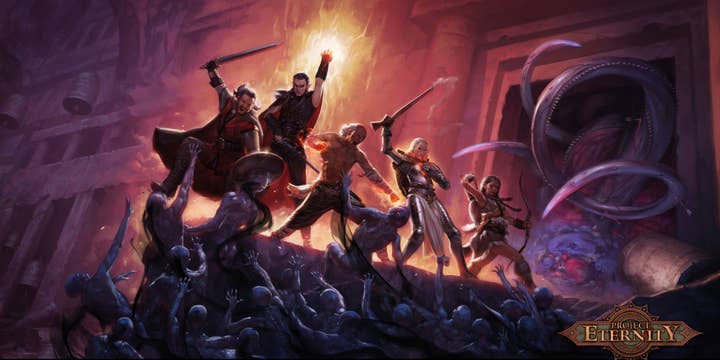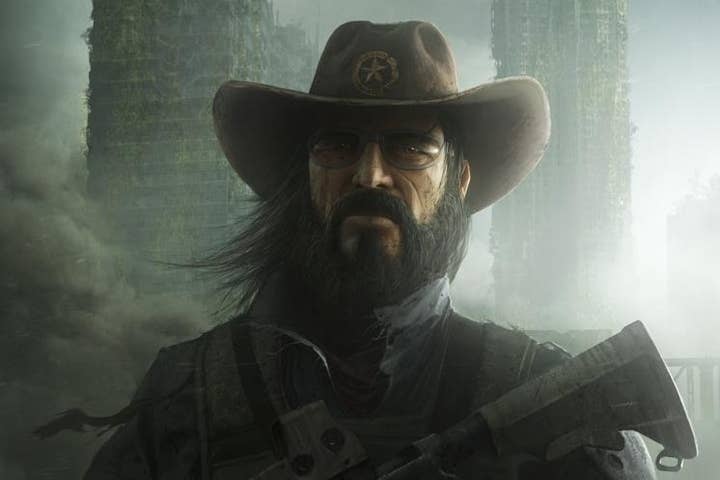Publishers convinced by Kickstarter, says Avellone
Obsidian co-owner says companies are now more open to proven crowdfunding genres
Few game developers know the Kickstarter experience as well as Chris Avellone. The Obsidian Entertainment co-owner and creative director Chris Avellone has been part of a trio of very successful Kickstarter campaigns in inXile's Wasteland 2, Project Eternity, and Torment: Tides of Numenera. And when he's not busy with those projects, he moonlights as a human stretch goal for other Kickstarter campaigns.
"I don't mind saying that I prostitute myself quite frequently," Avellone said. "It's all in the name of writing, so I'm ok with that."
Avellone was tapped to deliver the keynote address for the final day of the Montreal International Game Summit, and his Tuesday talk was focused on developing old-school RPGs with the new-school funding method of Kickstarter. Starting with Wasteland 2, Avellone explained that using Kickstarter has changed the normal development cycle in some pretty significant ways.
First and foremost, Avellone said it's incredibly unusual to develop a game whilst sharing, not just details on mechanics and interface designs with the community early, but sharing technology between companies with a close working relationship (such as Obsidian and inXile).
"Most of our backers are insanely critique-y about our interface designs, wonderfully enough," Avellone said.
InXile has had an interface designer position open for months, Avellone said, but there's some question as to whether or not they could get by without it by releasing work-in-progress interface shots and acting on the ensuing avalanche of feedback they get from backers.

"We've also been able to do something with Wasteland 2 that I've never been able to do before, and that's share the vision of the game," Avellone said.
Another of the big game-changers with the Kickstarter development process has been the Unity engine. Avellone said it's affordable, powerful, and comes with the complete package to create the isometric role-playing games he's been working on. Obsidian also has a new in-house engine called Onyx, but it was actually too expensive to use - because even though it's proprietary to Obsidian, Onyx has a wealth of middleware plug-ins like Havok physics, and even the millions raised through Kickstarter weren't enough to make that a viable development option. However, parts of the engine were able to be extracted from Onyx and converted to work in Unity, which Avellone said was a big help.
Downscaling the team from creating fully rendered 3D environments like in Fallout: New Vegas to the isometric RPGs has been "incredibly refreshing," Avellone said. Having the smaller team size (20 instead of 70 or so) has empowered the developers they have to take on new duties and wear new hats.
"We recognize that there are certain things we cannot do with a smaller team on these role playing games, and that's fine"
As much as there have been differences in the development process, the general strategies remain the same. The team still prioritizes everything that needs to be added into the game. They prioritize how systems and powers work, how combat and navigation work before creating the levels and context of the world around them. That process of creating the levels is also unchanged, with the developers designing levels with flow charts to keep track of the players' paths through the game.
Moving on to Baldur's Gate homage Project Eternity, Avellone said the game has a lot in common with the old Infinity Engine games it was inspired by. However, the strategy has changed in number of ways. The Infinity Engine games were based on the Dungeons & Dragons universe, which meant there was only so much the developers could do to create lasting changes on the license. With Project Eternity, Avellone said the team is trying to create a franchise so it still has to be careful to leave things open for the future, but it is their franchise to shape as they decide best.
"We recognize that there are certain things we cannot do with a smaller team on these role playing games, and that's fine," Avellone said. "Because the entire game is not going to be voice acted, we need to approach the dialog as a reader would, as if they're going to be reading these games instead of listening to these games."
Eliminating the resource costs associated with customized animation and voice acting has also opened the writers up to create more sprawling dialogue trees, something Avellone said wasn't always possible with titles like Fallout: New Vegas.
"About two years ago, I would have said that trying to pitch an isometric role playing game was a pretty hard sell," Avellone admits. But things are changing. Words like "old school," "isometric," and "windows-focused" weren't very sexy for publishers. However, now that Kickstarter has shown there's a market for such titles, Avellone said publishers have been much more open to the idea. They know they won't get the next Call of Duty out of it, but these types of games can still provide a strong return and bolster a portfolio, Avellone promised.
"I would much rather target a certain level of quality and have a delay as a result rather than release something we're not happy with"
The crowd isn't just good for funding; Avellone also said it's good for content creation. With Wasteland 2, inXile has put out asset requests to the community, describing 3D models they would like to include in the game. Backers create and submit their own models, and if they're used in the final game, those content creators will get credit for their efforts. Avellone said it's mutually beneficial as the team gets more content to populate out the world, while aspiring developers get something they can put on their resume.
Avellone also talked about the problem of feature creep and working within a hard budget. With Project Eternity, Avellone said there were certain features that had been promised to the community. All those features become A-priority items and must be completed no matter what else happens in development, but the team also has more freedom for iteration. When working with a publisher, there can be certain contractual obligations that prevent developers from changing the game - but if some feature isn't coming together on a Kickstarter game, Avellone said there's more latitude to go back to the fans and explain why it's not working, and make changes from there. And if those changes push a planned release date back, there are worse things.
"I would much rather target a certain level of quality and have a delay as a result rather than release something we're not happy with," Avellone said.
One thing Avellone advised developers against, at all costs, was trying to crowdfund a game with a smaller backing goal than was actually needed, for fear of scaring off would-be backers. It's important to be upfront with backers about what it costs to make the games and fulfill rewards at every step, Avellone said. He's seen too many projects that were cancelled at the 11th hour because they were on the verge of receiving backing, but would not have met whatever funding amount the developer had actually set as the minimum funding threshold for the promised project.
One thing to keep in mind with the crowdfunding scene is that it's still evolving. A couple years ago, Avellone said he would have thought Kickstarter was fine for very small projects, but that it would never approach the sort of budgets required for large-scale development. However, the funding amounts game projects pull in just keep going up and up. Seeing how Star Citizen has brought in $26 million and counting, Avellone isn't so sure anymore where the upper limit of viable crowdfunding is.

